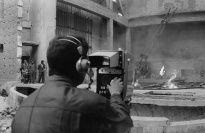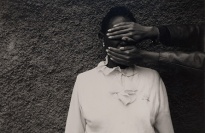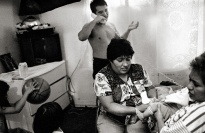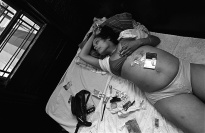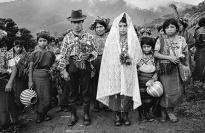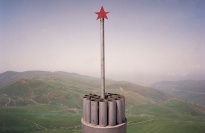About Moving Walls 7
Documentary photography is not purely aesthetic but narrative and evocative, forcing you to look closer, catch your breath, or even hide your eyes. At its best, it transcends the image on the wall and asks you to consider the questions that these stories, just seven among millions, provoke. To this end, Moving Walls serves as a conversation piece on open societies and the work that lies ahead, challenging us to react to irregular political and social moods, think outside the box, and find answers to the contradictions that we see.
The current Moving Walls exhibition, the seventh for the Open Society Foundations, revisits some themes that lie at the core of our mission. Seven photographers document social struggles—from Ethiopia to Brooklyn—and their work reflects the Foundations' commitment to human rights and justice around the world.
Shocked by the treatment of Chechens in the former Soviet Union, Thomas Dworzak journeyed to Chechnya and stayed to cover the wars. His photographs, which document the Chechen fighters’ disastrous exit from their capital in early 2000, capture the conflict within the context of the surrounding political landscape.
Eric Gottesman’s photographs reveal the effects that AIDS has on society. His project demonstrates how the stigma of the disease limits the social and professional interactions of Ethiopians living with AIDS and reveals the emotional distress felt by a generation of parentless children.
In Brooklyn, Brenda Ann Kenneally documents real life stories from the hip-hop generation, illustrating how drugs and the criminal justice system have shaped the lives of three women and their families.
Twenty years after the El Mozote massacre in El Salvador, the identification and return of the victims’ remains is a relief for surviving family members. Pedro Linger-Gasiglia joined the Argentine Forensic Anthropology Team to document their work exhuming the victims of this tragedy.
For more than two years, Jon Lowenstein photographed day laborers on Chicago’s South Side, capturing both their personal and professional lives. He explores their role in the new global economy as temporary workers lacking insurance, health benefits, and job security.
As a human rights activist and photographer, Jonathan Moller photographed the repercussions of Guatemala’s civil war, focusing his lens on the communities that emerged from the army’s violent repression of the civilian population in the early 1980s.
And in Afghanistan, Ivan Sigal discovered hope in a war-ravaged country, documenting the return of mass media and visual culture—satellite dishes on rooftops, music performed in the streets, and crowded movie theaters—to a land that was deprived of both under Taliban rule.
